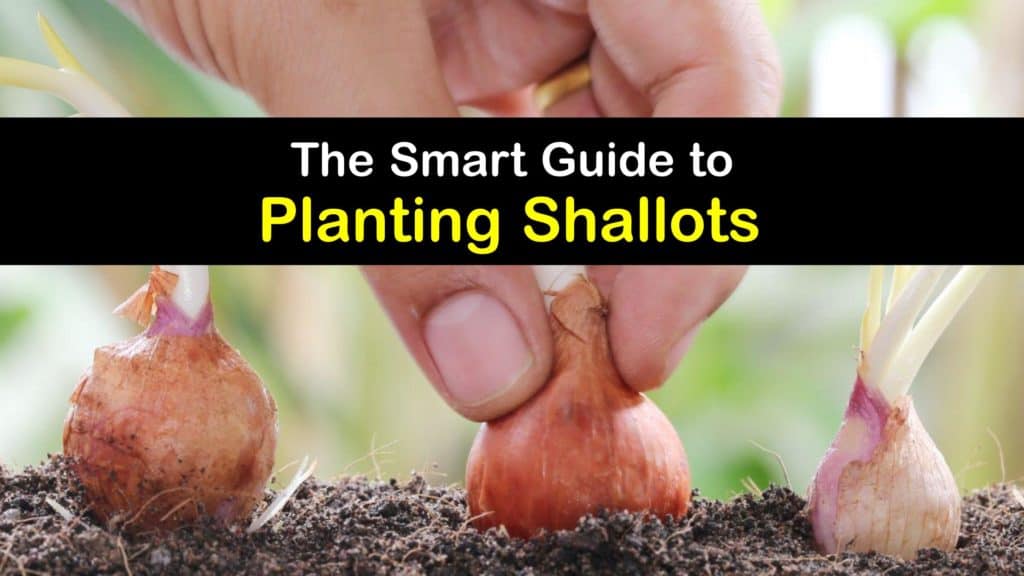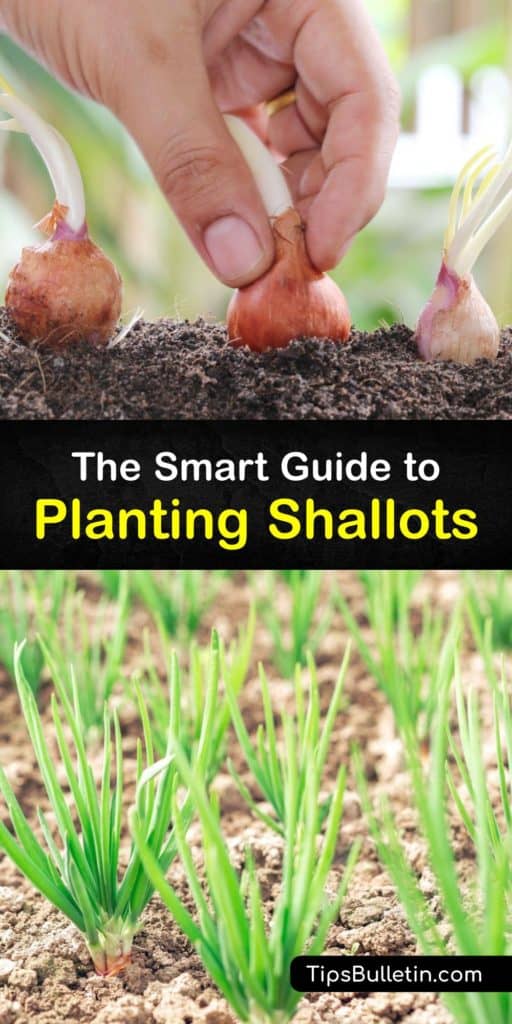Various attractive plants are members of the Allium group, or onion family, containing onions, leeks, garlic, and chives. Since shallots, known in the grocery store as green onions, scallions, or French shallots, are a delicious addition to many meals, growers often wonder how to plant shallots.
Shallot refers to a type of onion called multiplier onions, which produce two or more shallot bulbs per plant. Initially classified as a different species (Allium ascalonicum), shallots are now botanically classified as an onion variant (Allium cepa var. aggregatum).
Shallots grow like garlic in the ground, but each bulb has onion-like concentric layers. Shallots are smaller than bulbs of garlic, have a milder onion flavor, and are not difficult to cultivate. They do best with early spring or fall plantings, similar to garlic cloves, and because of their rapid development rate, they are generally ready to harvest in 90 days. All Allium cepa species and their variations are toxic to pets, so consider this when planting shallots.

Planting Shallots Made Simple
The difference between onions and shallots when it comes to growing them is negligible. Plant-shallots in their late fall growing season and harvest them early next summer. However, fall plantings don’t usually work in the colder sections of this plant’s growing zones.
You may plant them in the early spring or late spring for a late summer crop. Plant the shallots between six and eight weeks before your region’s expected last frost date. Learn the best way to plant shallots and enjoy this flavorful veggie fresh from your garden.
How to Plant Shallots – Location and Planting
Grow shallots in a dry place in your garden that gets full sun. Shallots don’t do well when they have to compete for moisture in the soil or nutrients, so having some space apart from other plants is preferable. Furthermore, the planting area must have good soil drainage and be free of flooding. Grow shallots in pots, too.

Many growers wonder about planting shallot seeds, but cloves are the most prevalent source of shallots. When planting shallots, place individual cloves with the thickest end facing down and the tip above the soil surface.
There is also an easy way to grow shallots in water, the same way you do with onions. It’s easy and a great way to grow them inside.
How Far Apart to Plant Shallots
Many growers wonder how far apart to plant shallots. Shallot plant spacing is critical to successful growing. Plant shallot sets in rows about 6 inches between individual bulbs and each row about 12 inches apart.
These plants grow without the use of a support system. Knowing how far apart to plant shallots allows proper air circulation and a healthy root system development.
Planting Shallot Seeds
Although shallots are more commonly grown from individual cloves, planting shallot seeds is possible. When to best plant shallots is to plant shallot seeds eight weeks before your area’s last expected frost date. When planting green onions in soil or shallots, sow seeds 1/4 inch deep in a shallow tray filled with seed-starting mix.
In approximately a week, you should notice germination if you place the dish in a sunny area. Plant the seedlings 6 inches apart in the garden when the threat of frost has passed.
Shallot bulbs, which go through a dormant period in the winter, may overwinter in the ground, like when you plant green onion bulbs in your garden. They don’t require extra care to overwinter if their planting location has adequate drainage. The plant awakens as the temperature rises, accelerating the growth process.
How to Plant Shallots – Care
Grow shallots in full sun or six hours of direct sunlight most days for optimal results. Shallots survive some shade, although they aren’t as hardy. Shallots thrive when grown in a well-draining soil rich in organic matter.
They prefer a pH range of 5.0 to 7.0, which is acidic to neutral. Shallots require constant watering throughout the growing season. Mulch may help maintain a light moisture level in the soil but do not allow the bulbs to sit in saturated soil since this may cause white rot. Avoid replanting if possible to keep their root system intact.
Temperature, Humidity, and Fertilizing When Planting Shallots
Shallot cloves require a chilly dormant period of at least a month at temperatures from 32-50°F before they begin to grow. Temperatures of 35-90°F are ideal for shallot plants.
Shallots are not humidity-sensitive as long as they are watered frequently and maintained in well-draining soil. Shallots don’t require much fertilizer, but enriching the ground helps increase nutrients and drainage in the spring.
Use a nitrogen-rich liquid fertilizer like this easy homemade fertilizer for shallots to give your vegetables a burst of nutrients.
Shake and set aside for about 20 minutes, or until the granules dissolve. Apply directly to the soil surrounding your shallots.
Harvesting Shallots
Determining when to pick your shallots is the fun part. Shallots are ready to harvest 90 days after planting. When the leafy green tops of shallots turn brown and wither, they’re ready to be dug up, just like onions.
Remove the whole plant from the earth and carefully shake off extra soil. Let them cure in a dry, shady location for a couple of weeks. Remove the green tops and roots.
Shallots may be kept for up to eight months in a cool, dry place between 35 and 45°F. Ensure they’re in a mesh bag with plenty of air circulation. Shallots have a mild onion/garlic taste and substitute for onions in any dish calling for them, especially if you prefer a softer flavor. They’re delicious raw or cooked.
Planting shallots adds to the garden. Learning how to plant shallots and how far apart to plant shallots enables the grower to enjoy these delicious little onions fresh.
Traditional heirloom and hybrids designed to have a more significant size or improved storage lifespan are the two types of shallots marketed for garden planting. Whether you plant the French Gray, Frog’s Leg, Ambition shallot, or the similar Dutch Yellow, growing shallots is a fun project yielding tasty garden-fresh produce.

If you loved this article on how to plant shallots, please share these tips on planting shallots with your friends and family on Pinterest and Facebook.